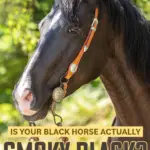A smoky black horse is a horse with body fur that ranges from dark-brown to coal black, and a black mane and tail.
Smoky black occurs when a genetically black horse gets an extra cream gene from one parent.1 Smoky black horses usually appear true black at first glance. However, smoky black horses can vary in color depending on lighting, gene expression, time of year, and age.

🎨🐴 🔍 Sometimes smoky blacks are mistaken for other horse colors, such as dark chestnut, grulla, black buckskin, dun, or even a very dark chocolate palomino. But in this article, I’ll share 4 ways to check if your horse is actually smoky black.
Horse Color Breedings that can
Create Smoky Black:2
| Black Homozygous x Cremello | ⚫⚫ + ⚪⚪ = 🌑 | |||
| Black Homozygous x Palomino | ⚫⚫ + ⚪🟤 = 🌑 | |||
| Bay x Cremello | 🟤⚫ + ⚪⚪ = 🌑 | |||
| Bay x Palomino | 🟤⚫ + ⚪🟤 = 🌑 |
Smoky Black Horses Prices
Smoky black horses are rare. In March 2023, only 13 out of 3785 listings of horses for sale on the popular equine classifieds site DreamHorse.com were smoky black colored. Of those 38, three were actually white horses with spots and, based on analysis of the horses’ pedigree, 3 more were more likely to be true black rather than genetically smoky black.
Based on our analysis, a smoky black horse costs, on average, a little over $11,000. However, smoky black foals and weanlings were often listed under $5000, while well-trained smoky black horses were most often $10,000 and up.
A Visual of Smoky Black Horse prices compared to All-color Horse Prices:
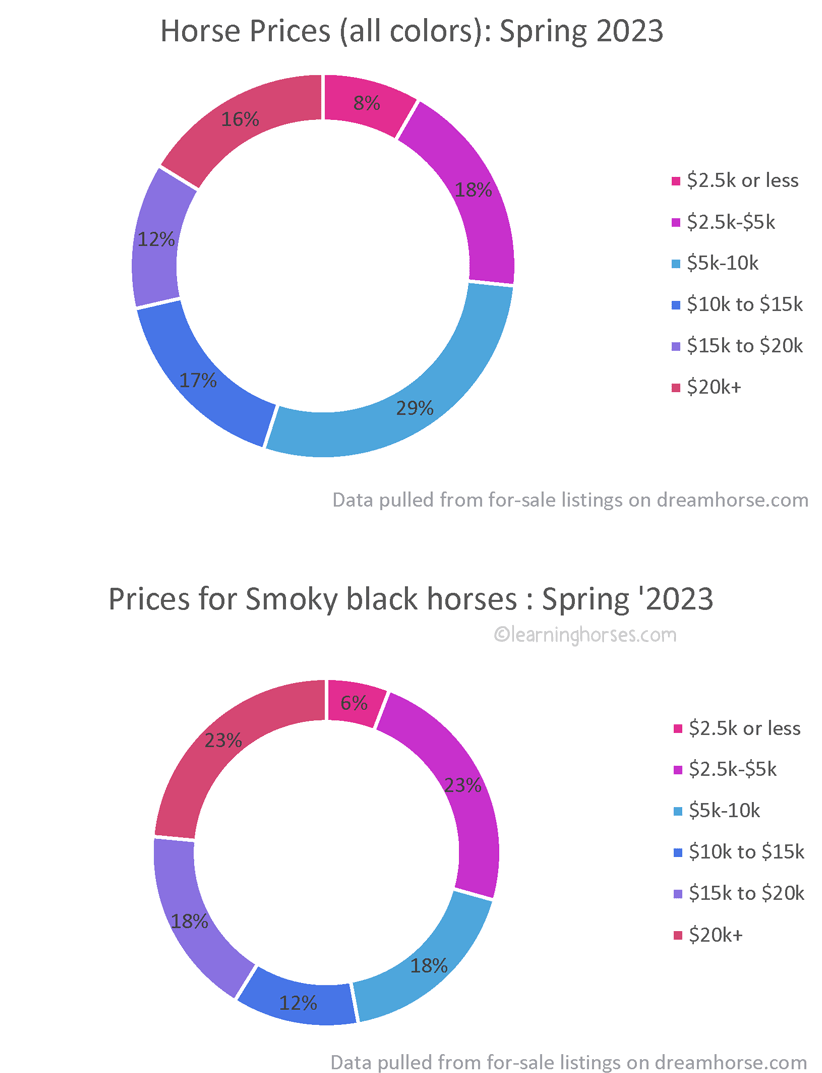
Market Analysis
How does that compare to the average cost of a horse for sale? Well, as you can see from the graph we have compiled, when looking at sale prices for all colors of horses, more than half of the horses on the market (55%) are listed for an asking price of under $10,000. However, for smoky black horses, only 47% of the listings are under $10,000.
Key Takeaways:
- On a budget of $2,500, smoky black horse buyers will only find 6% of horses for sale in the budget, compared to 8% for the general horse population.
- 23% of smoky black horses are listed between $2,500 and $5,000, compared to 18% of all horse colors. But our analysis found that the smoky black horses listed for sale in this price range tended to be younger and less trained than the general sample.
- In the $5000-$10,000 range, both groups (smoky black horses for sale and all-color horses for sale) tended to be made up of adult, saddle-broke horses. 18% of smoky black horses were listed for $5,000 to $10,000, compared to 29% of all horses,
- Horses listed for sale for more than $20,000 made up only 16% of all-color horse classified ads we studied, but comprised a whopping 23% of smoky black horses – with a similar pattern seen for horses listed between $15,000 and $20,000.
Bottomline? The cost to buy a smoky black horse is, typically, significantly more than the cost to buy a similar horse without regard to color.
Take a quiz to learn if you’re ready for your first horse.
Identifying a Smoky Black Horse
Look out, there are some look-a-likes! Some common horse colors look like Smoky Black Horses in the right light. A common color confused with this rare one is, believe it or not… black! “Many black horses known to carry a cream gene are dark black with no visible effect of the cream gene”3 In other words, most smoky black horses look just like a black horse.
4 Ways to tell if a black horse is a smoky black
Here are four telltale signs that you’re looking at a smoky black, not a black horse:
1. 👁️ Look closely at the horse’s eyes
One way to recognize a smoky black horse is by looking around the eyes. Just like how grey horses have distinctive eye markings, smoky black horses may have eyes with an apparent amber or teal color2
2. 🏴 Inspect the Mane
Smoky black occurs when a creme gene modifies a base coat. In this case, the modifier only acts on the body fur, not the mane or tail.
A reliable way to tell the difference between a smokey black and a liver chestnut or similar color is to closely inspect the mane and tail hairs. If the mane and tail are not true black, the horse cannot be a smokey black horse.
3. 🐴 Examine the horse’s ears for pale fur
“If a black horse has a parent with a dilute gene, it’s a good idea to examine the horse’s (inner) ear hair. If you find golden colored hair, it’s extremely possible that the horse inherited a dilute gene and is truly a smoky black”4
4. 🧬 Have a DNA test done
With a simple test, UC Davis veterinary genetics lab can determine your horse’s genetic coloring. While a full-color panel testing for all color variations costs quite a bit, finding out if your horse has a creme gene is just $25.
Smoky Black Horses are Rare
Smoky Black Horses are fairly rare- occurring in only a few horse breeds where the dilute gene is allowed. As mentioned in our price analysis, out of 3785 horses listed on a popular equine classified site in Spring 2023, only 13 were smoky black horses!
While that’s a good indication that smoky black is rare, it’s not as rare as you might think based on these numbers, Why? Because most people who own a smoky black horse think it’s “just” a black horse!
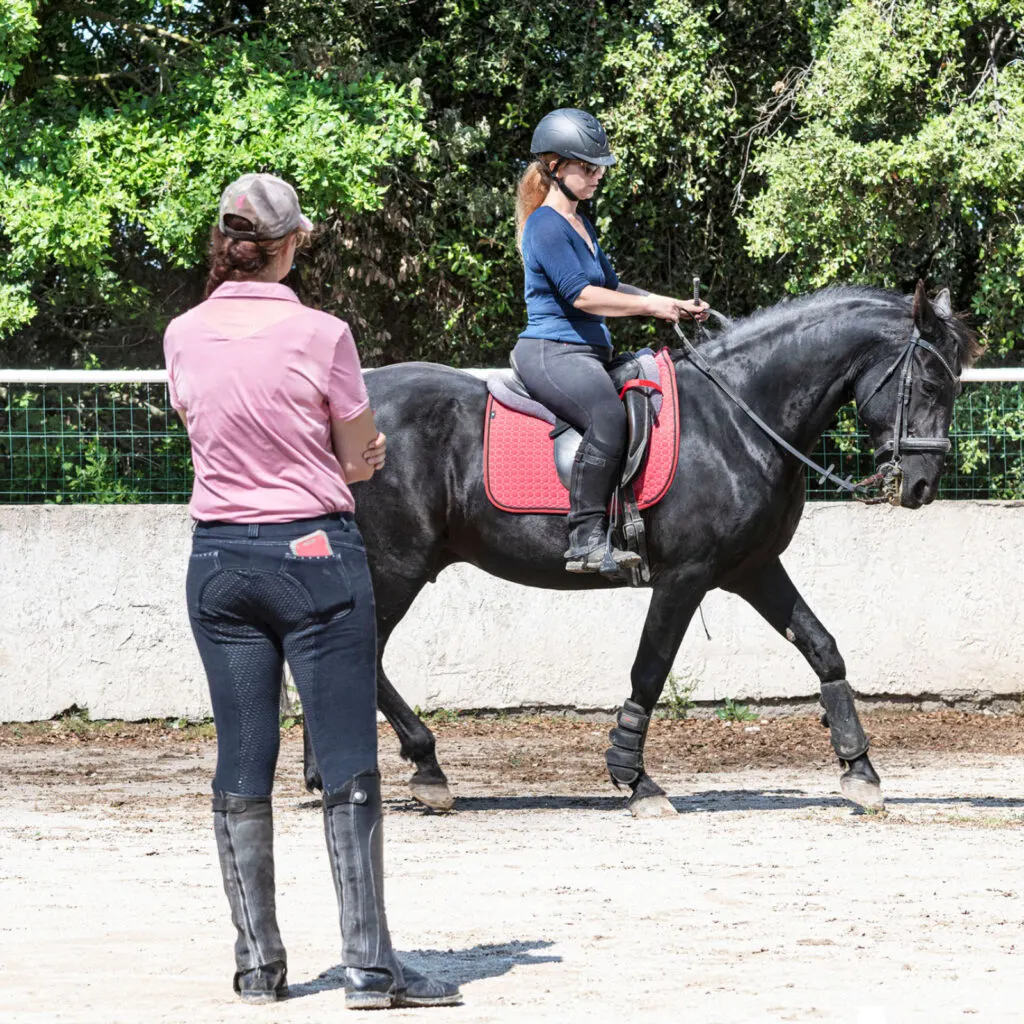
Breeds with Smoky Black Horses
The smoky black color can appear in any horse breed that registers palominos. (Because, remember, 🟤⚫ (bay) + ⚪🟤 (palomino) = has a chance of 🌑 (smoky black) ) Any breed that recognizes the color palomino can register smoky black horses, as long as they meet the breed’s other requirements for registration.
- American Quarter Horse – The American Quarter Horse is the most popular breed in the USA. The AQHA allows horses with cream gene variants in its breed registry, including cremello, perlino, and smoky cream, as long as both parents are registered Quarter Horses.
- American Paint Horse – The American Paint Horse is colorful (and often confused with pinto horses). The APHA allows horses with cream gene variants, including smoky black and smoky cream, to be registered.
- Tennessee Walking Horse – The Tennessee Walking Horse is a gaited breed known for its smooth, comfortable ride. The breed registry does not specifically address the cream gene, but it occurs regularly.
- Pura Raza Española – This Andalusian-related Horse is a stunning breed known for its noble beauty. The breed registry does allow smoky blacks and other creme/dilute colors, but this is a policy change based on a new ruling in 2002.
- Morgan Horse – The Morgan Horse is one of America’s first American-bred horse breeds. The AMHA allows for horses with cream gene variants to be registered, including cremello, perlino, and smoky cream, as long as both parents are registered Morgans.
- Missouri Fox Trotter – The Missouri Fox Trotter is a gaited breed popular for trail and pleasure riding. The association allows horses with cream gene variants to be registered, including cremello, perlino, and smoky cream, as long as both parents are registered MFT Horses.
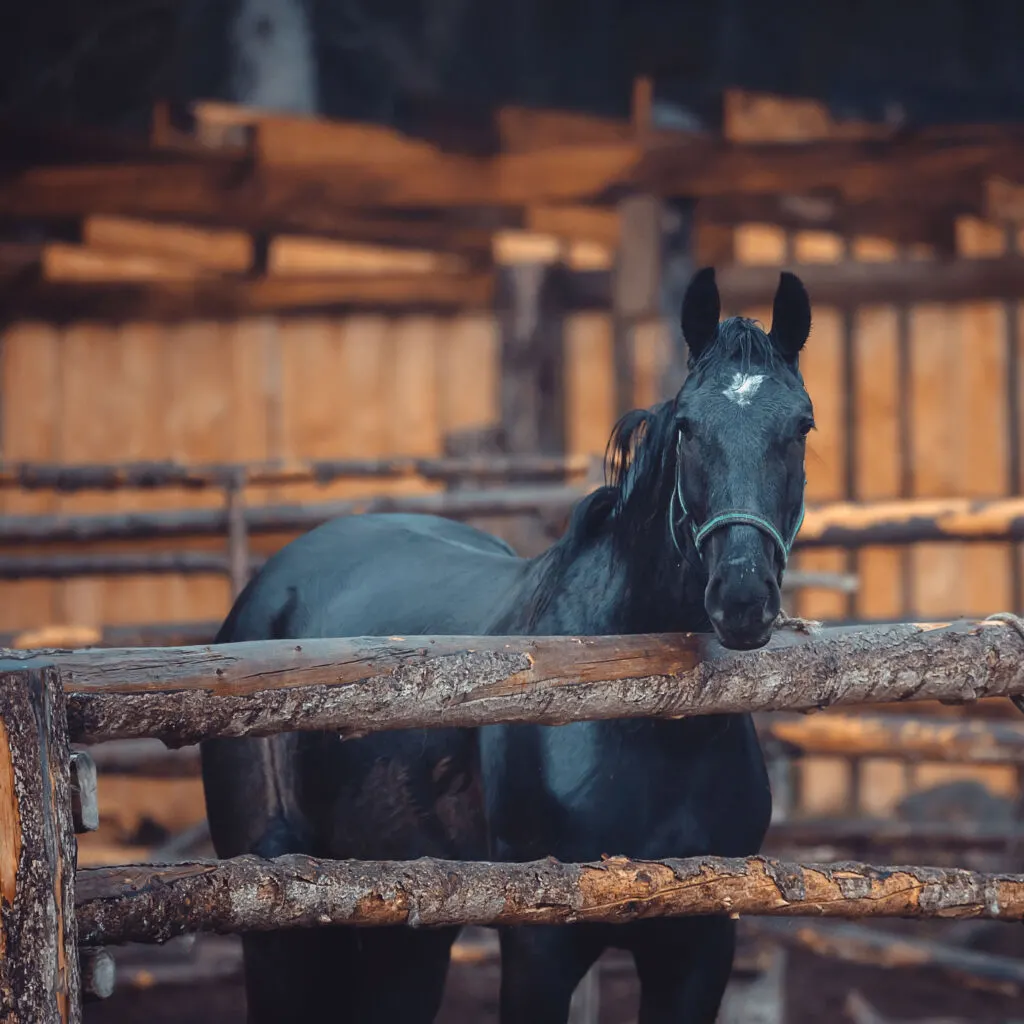
How to get a Smoky Black Horse
The easiest way to get a smoky black horse is to purchase one, but it’s also possible to breed one
Genetic Makeup
If you have read our other articles on rare horse colors, you probably already know that:
- 🟤 + ⚪ = 🟡 Palomino horses are produced when a chestnut (brown) horse gets a dilute gene,
- ⬛|🟫 + ⚪ = Buckskin occurs when a bay horse receives a dilute gene.
🟤⚫ + ⚪🟤 = 🌑 Smoky black occurs when black horses get a dilute gene.
Remarkably, the dilute gene often doesn’t have a dramatic effect on the black horse. A smoky black horse might look like true black, slate black, or even just like a black horse that is bleached in the sun.
🏫 Elementary level Guide to smoky black horse genes:
Ok, here’s the Reddit ELI5 version of this genetic combo: A smoky black horse is a horse with a black coat that usually looks a bit lighter or “smoky.” This happens because of something called the cream gene, which can make a black horse’s coat look lighter.
To breed a smoky black horse, you need to find two horses with certain genes. One horse needs to have at least one “black coat” gene and two “no bay” genes. The other horse needs to have at least one “cream” gene. When these two horses have a baby horse, there’s a chance it could be a smoky black horse!
👩🏽🎓 High school science on smoky horse genetics.
Ok. Let’s dive in. First, you need to understand some basic horse color genetics. There are three main genes that affect coat color: Extension (E), Agouti (A), and Cream dilution (Cr).
Adding the cream dilution gene causes a lightening of the coat. A pure black horse with two recessive copies of the cream gene will become smoky black when you add one dominant cream dilution gene. A double dilute gene will result in a smoky cream horse.
To breed a smoky black horse, you need to mate horses with at least one dominant E gene, two recessive a-alleles, and a horse that carries at least one cream coat gene. If you follow these guidelines, you could breed a smoky black horse with a beautiful and unique coat color- but not 100% of the time.
Smokey vs Smoky Black: How to Spell It
Smoky Black horses often get called Smokey Black! In fact, it happens so often that there was debate on our team about how to spell the term for this article.
We did a little research to figure out the “right” way to spell the name of this horse color- and the results were so interesting we thought they were worth sharing! As you can see in the donut graphs below, more than 90% of authors writing about this color in books spelled the word “Smoky.” However, after analyzing data from over 1000 internet forum posts, we found that there was almost a 50-50 split between the use of the Smoky and Smokey spelling variants.
Conclusion: Technically, Smoky is the right way to spell an adjective form of this word. Clearly, professional editors favor this spelling. That said, language is defined by how it is used, so if you prefer to use the spelling variant Smokey Black, you’re in good company.
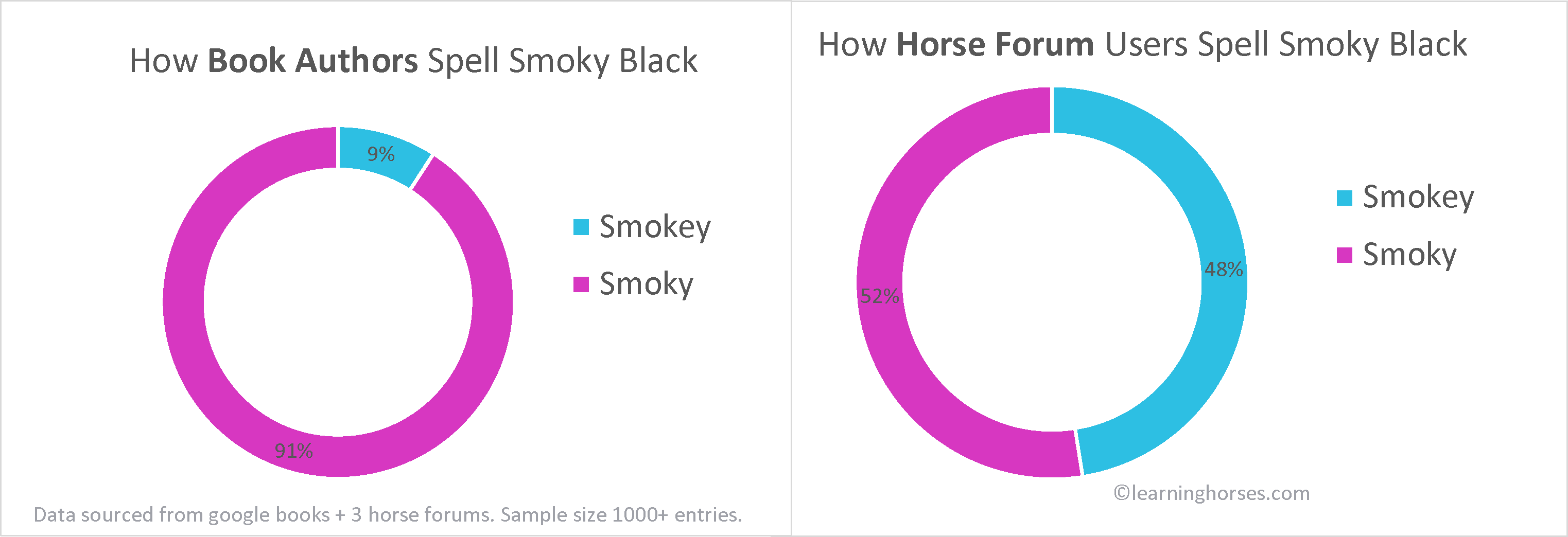
Smoky Black or Sooty Black? How to Know the Difference
I’ll be honest, I used to think that Sooty Black and Smoky Black were two words for the same thing. It wasn’t until I began breeding horses- and introduced a palomino mare to my herd- that I began studying dilute colors. That was more than a decade ago, and now I love talking about these nuanced differences in horse genetics.
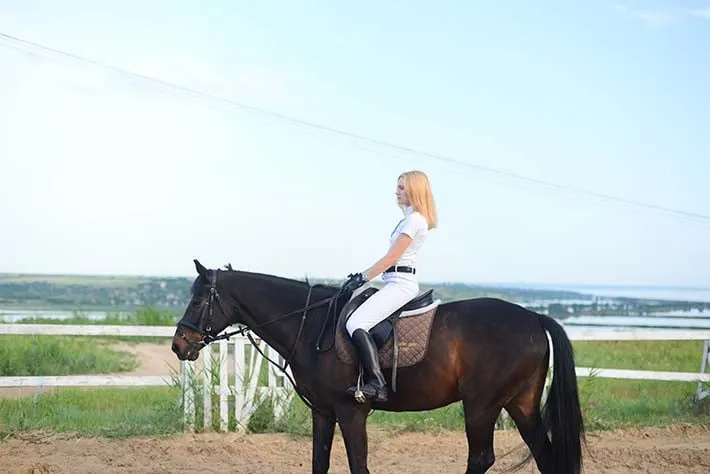
How Sooty Black is Different from Smoky Black
Sooty black and smoky black are similar-looking coat colors in horses caused by different genes.
🔎 Sooty black appears black with individual hairs having a brownish or smoky look due to the sooty gene.
🔍 Smoky black is a dilution of the black coat color caused by the cream gene. This might give a horse a dark gray or blue-black hue with a slightly hazy appearance.
Understanding these coat colors is crucial for horse breeders, but just a hobby for the rest of us!
According to equine color genetics, sooty is a “modification of body color” rather than a true color itself. Depending on breed, this modifying gene is called sooty or smutty. The presence of the sooty gene can range from barely perceptible without a DNA test to dramatically impacting the color of a horse.5
Other Black Horses with a Smoky Look…
There are a few horse colors that can look similar to smoky black. This, rather than actual scarcity, is why so few smoky black horses are listed for sale at any given time. Here are a few lookalike colors:
- Black: This is the base color for a smoky black horse and because the cream gene sometimes has very little effect, true black horses and smoky black horses can easily be confused without a DNA test.
- Bay: Most bay horses are bright chocolate or liver brown with black “points” on their legs, tail, and mane. However, some bays can look very dark and may be mistaken for a sun-bleached smoky black.
- Dark chestnut: A dark chestnut horse with a deep dark coat can look almost black. However, it will typically not have a true black mane and tail- a marker of a smoky black
Genetic Variation: Smoky Creme Colored Horses
You now know that smoky black occurs when a black horse gets a cream-colored gene from one parent. But what happens if a black horse gets two cream genes and also genetics for a black coat? (Getting a copy from each parent, by the way, means a horse is “homozygous” for the gene)
Black + 2 Cream genes create a very rare horse color called a “smoky cream”. Smoky cream-colored horses have an appearance similar to a Perlineo.(( The Horse: Third Edition. (2020). (n.p.): Waveland Press. )) “When these two cream alleles occur on any horse color, red and black hair is light tend to off-white. Black hair may retain some orangey color. Double dilutes also have pink skin and blue amber eyes”6
Historical Fact
Because so many smoky black horses actually appear to be a true black, these horses were often a wildcard for breeders!
Today horse breeders routinely test horses to know what color genes they carry. However, even 20 years ago, the only way a breeder would know that their “black” horse was actually a smoky black was when that horse passed the creme gene along to a foal. Breeders would find out their “black stallion” was smoky black when out popped a surprise delivery of a Palomino or buckskin foal from a plain old chestnut-colored mare!
- The Illustrated Guide To The Morab Horse. ISBN 9780578004655 (n.d.). (n.p.): Lulu.com. PG 54 [↩]
- The Illustrated Guide To The Morab Horse. ISBN 9780578004655 (n.d.). (n.p.): Lulu.com. PG 55-56 [↩] [↩]
- Beaver, B. V. G., Sponenberg, D. P. (1983). Horse Color. United States: Texas A&M University Press. p 99 [↩]
- Johnson, Daniel, and Johnson, Samantha. The Field Guide to Horses. United States, Quarto Publishing Group USA, 2009. [↩]
- Sponenberg, D. P., Bellone, R. (2017). Equine Color Genetics. Germany: Wiley. Pg 46 [↩]
- Molecular and Quantitative Animal Genetics. (2015). United Kingdom: Wiley. pp 108 [↩]

